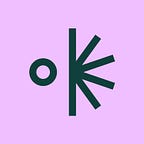How Sélavy Magazine Does Zines
At Projector, we’re fortunate to work with brilliant brands and creatives to help bring their visions to life — and now you can learn from them, too. Tips, tricks, and insights, directly from the marketers, designers, and creatives who walk that walk, below.
We sat down with Ashley Robinson, founder of Sélavy Magazine — a digital zine that showcases creatives’ stories — to find out how they use Projector to build narrative and community on Instagram and Medium. Sélavy Magazine inspires us with their willingness to go deep. The essays on Sélavy are multifaceted, layering interviews, videos, and photographs to showcase the complex origin stories of the artists they profile. With a multidisciplinary background and a focus on design, Sélavy creates a richly-layered visual world.
. . .
Q&A
Talk to us about Sélavy Magazine. What inspired the idea? Where did you start?
Sélavy Magazine was born of my constant need to write, and the realization that I could take ownership of a space that would be inclusive of creatives regardless of gender identity, race, religion, and career status. There are so many creatives in this world that deserve to have someone showcase their work and their story, but they get overlooked because their name isn’t *yet* a household name.
I started with nothing really. I came up with the concept in the fall of 2019, and within a week, had several interviews lined up. I took care of the written content and design, all but a couple of contributed articles, but I still needed visual content, so I formed a group of collaborators, close friends of mine, to take on Sélavy’s first photoshoot. It took place with several interviewees outside in Greenwich Village, very early in March, only days before the lockdown. This was in our pre-mask-wearing world, and I wasn’t even there actually, since I live in Houston, Texas, for the time being.
Why did you choose a digital zine as your medium?
Initially, the idea was to roll out digital downloads, but in exploring Projector, I realized that I needed to ensure that the entire community would be able to consume our content socially, instead of in isolation. Projector actually replaced my need for Adobe InDesign, and motivated me to revisit the possibility of a printed zine.
Zines have become increasingly more popular, why do you think that is? What role do you think they play in modern culture?
I think people are more open now to supporting the work of independent creators as opposed to just the big leagues. People are craving authenticity and art and community, and that need has increased tenfold since the pandemic began.
What helps you get in a good, creative flow?
Just like in my scriptwriting, I usually listen to a good playlist — sometimes film scores, sometimes music from the 60s or the 90s, it’s a mixed bag — look back through the art that my interviewee has created, and come into this headspace of needing to do right by my interviewee.
How do you think about building a community around Sélavy?
I’m constantly thinking of ways I can make my readers feel just as seen as those that I feature. I’ll often ask questions on IG stories as to how I can improve their experience, who they’d like me to interview next, etc. Right now, routine and community are at the top of the list, and it’s driving me to become more consistent about my posting habits and engagement. Although the community is small at this present moment, I was told by an interviewee that a complete stranger in a fabric store near F.I.T. had heard about Sélavy. That was a big moment for me.
How has Projector helped with telling your story through visual design?
I would go beyond saying Projector helped, and say Projector has transformed the visual design of Sélavy.
I’ve rebranded a few times since setting out on this path, and Projector makes it so easy for me to explore new designs and make new tweaks to our look. I think a lot of people who run social accounts get hung up on wanting to keep everything looking the same — and I did at one point too — but I wanted to open up the Sélavy community to watching Sélavy evolve, in terms of visuals, content, and ethos. There’s no need to feel constricted in branding anymore.
What do you use Projector for?
I create carousel graphics for Instagram. This includes a cover, and several slides of written material. Aside from Sélavy, I’ve used Projector to create social media content for my other clients and projects, and recommend it to anyone and everyone.
What’s your favorite tool in Projector?
This may seem like an odd thing to point out, but my favorite tool in Projector is the layout grid. It’s fully customizable, and helps me to keep everything symmetrical and centered. I can’t bear to have an element out of place. A close second would be the ability to alter an existing Projector Story into an entirely different aspect ratio. Say if I start out creating an Instagram post, but I really need to create an Instagram Story instead, I can do that without starting all over. Alright, I can’t just say one! I have to mention the outline tool. Being able to add a border around my images with the click of a button, with settings for color and thickness, is something I haven’t found in any other online graphic design platform.
What makes something look good to you?
I keep up with graphic design trends because that’s a medium that I’ve always found inspiring, and I’m always drawn to design that combines the URL with the IRL. Something that feels both homespun and digital at the same time. It needs to be clean, but also make a statement.
